
Harry Herman Roseland. Reading Tea Leave. 1906/New Britain Museum of American Art/Wikimedia Commons
In Turkey and the Balkans, drinking coffee followed by reading the grounds left over has long been a favorite pastime. This method of divination is a type of tasseography, the interpretation of patterns formed by tea leaves, coffee grounds, or wine sediments. Discussing the future is only part of the ritual because for centuries, sharing coffee has been one of the best ways to discuss the latest and juiciest gossip. By the sixteenth century, this tradition was well established in the harem of the Turkish sultan Suleiman the Magnificent. The sultan's wives and concubines were not allowed to leave the palace, but fortune tellers had free access to their palace and could visit anytime. Studying the coffee grounds together in a leisurely fashion helped pass the time and discuss who had been beheaded recently, who had died in childbirth, and who had been sent to fight the Austrians.
What You Need to Tell the Future
For a proper reading of coffee grounds, you need a cup of Turkish coffee brewed in a traditional copper pot called a cezve. It is believed that the finer the grind, the more accurate the predictions will be. The cup should be bright white on the inside and must have a matching bright white saucer. You start by drinking the coffee to the bottom, savoring its strong, slightly bitter taste. Sometimes, sweets are served with the coffee. Take your time drinking the coffee because this is the perfect time to talk with those gathered about what is happening in the lives of mutual acquaintances and celebrities.
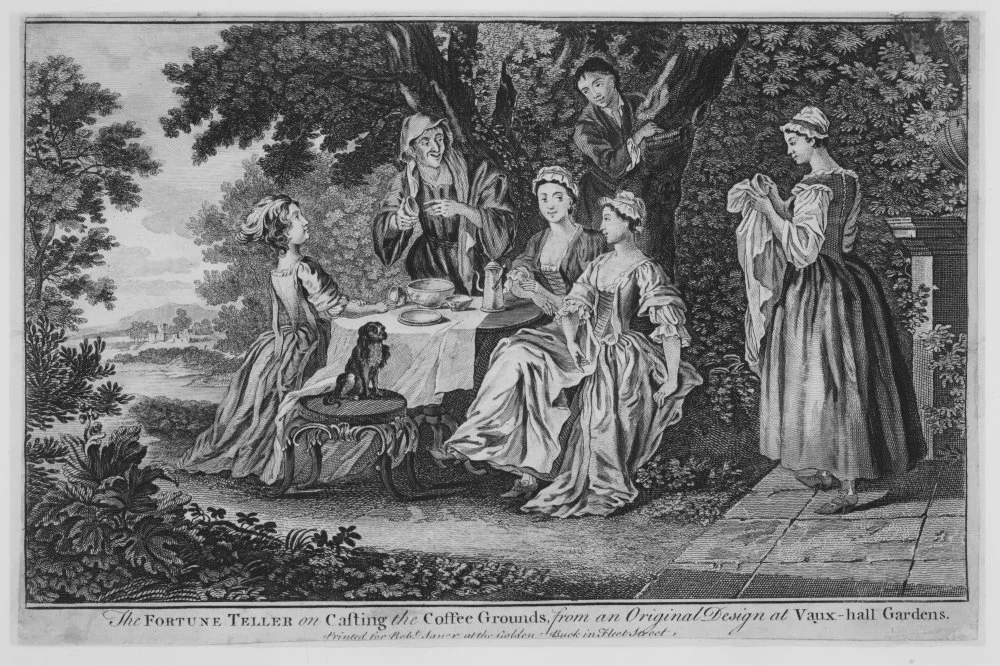
Francis Hayman. The Fortune Teller on Casting the Coffee Grounds. 1748–60/Wikimedia Commons
How to Get the Right Grounds
During the last few sips of your coffee, focus on what concerns you. What question do you want an answer to? Think about it carefully! After focussing on this question, make your wish, cover the cup with a saucer, rotate the saucer three times, clockwise or counterclockwise, depending on specific family traditions passed down from mothers to daughters, from grandmothers to granddaughters, in the Balkans and Turkey. When that’s done, turn the cup and the saucer over together so that the cup is upside down on the saucer. Place a coin or a ring on the bottom of the cup. In the first case, the grounds will predict the future of your business. In the second, it will focus on romantic relationships. In some cases, a special magic formula must be spoken aloud—I imagine it was something like ‘Show me, Coffee, all that I am and all that I will be!’
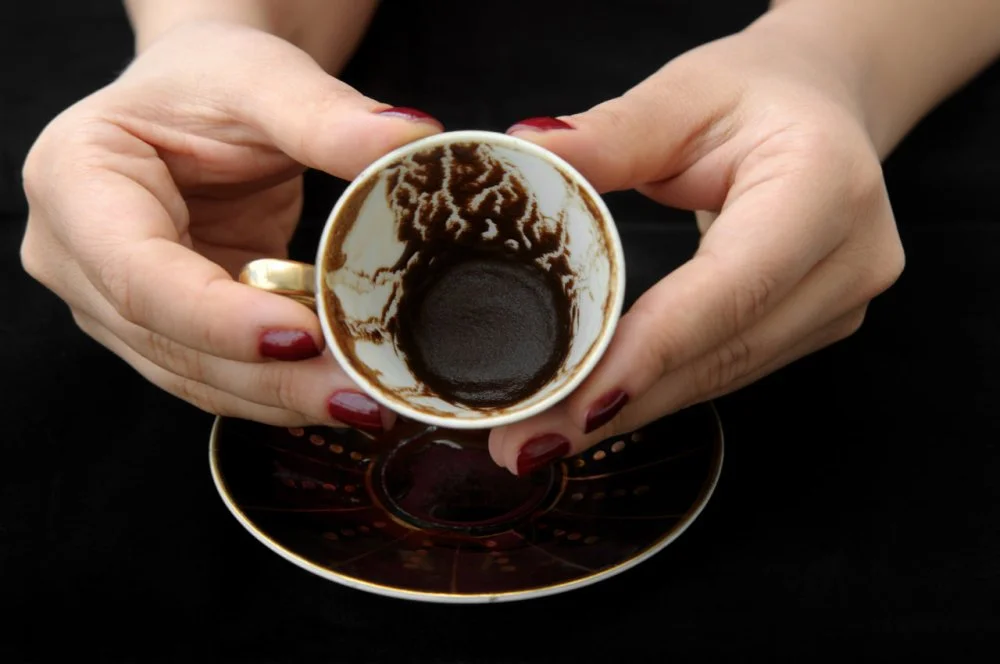
The dregs in a cup/Getty Images
Who Can Read the Coffee Grounds
Examining the coffee grounds and interpreting their patterns is not meant to be done by the person who drank the coffee, but by someone else. In Turkey, this is often done by special fortune tellers who can be found in coffeehouses, especially in tourist areas. The skill of kahve fali, or simply fal, meaning ‘fortune telling by coffee’, is widespread here. In Europe, friends or relatives might play the role of the fortune teller, but if no one is available, you can study the symbolism of coffee patterns and try to glimpse at your future yourself. However, this should be your last resort! In this case, you will not only be playing both roles—the seeker and the fortune teller—but you will also miss out on an important part of the ritual: discussing gossip!
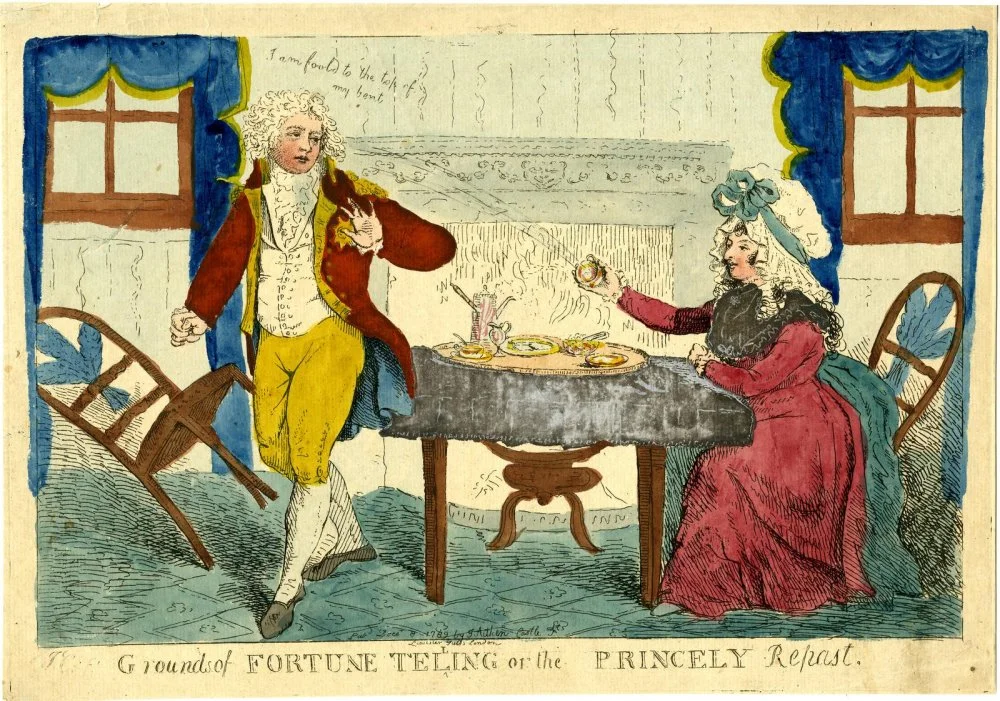
Isaac Cruikshank. Grounds of fortune telling or the princely repast. 1789/Wikimedia Commons
How to See Patterns in the Coffee
To the untrained eye, the residue in the cup might seem like an indistinct jumble, as Harry Potter discovers in the course of his adventures:
‘Right,’ said Ron. ‘Look, Harry, what can you see in mine?’
‘Soggy brown stuff.’ The heavily perfumed smoke in the room was making Harry feel sleepy, and he was struggling to make sense of what was happening.
‘Broaden your minds, my dears, and allow your eyes to see past the mundane!’ Professor Trelawney cried through the gloom.
Harry tried to pull himself together.
‘I think I see it,’ he said finally. ‘You've got a crooked sort of cross …’i
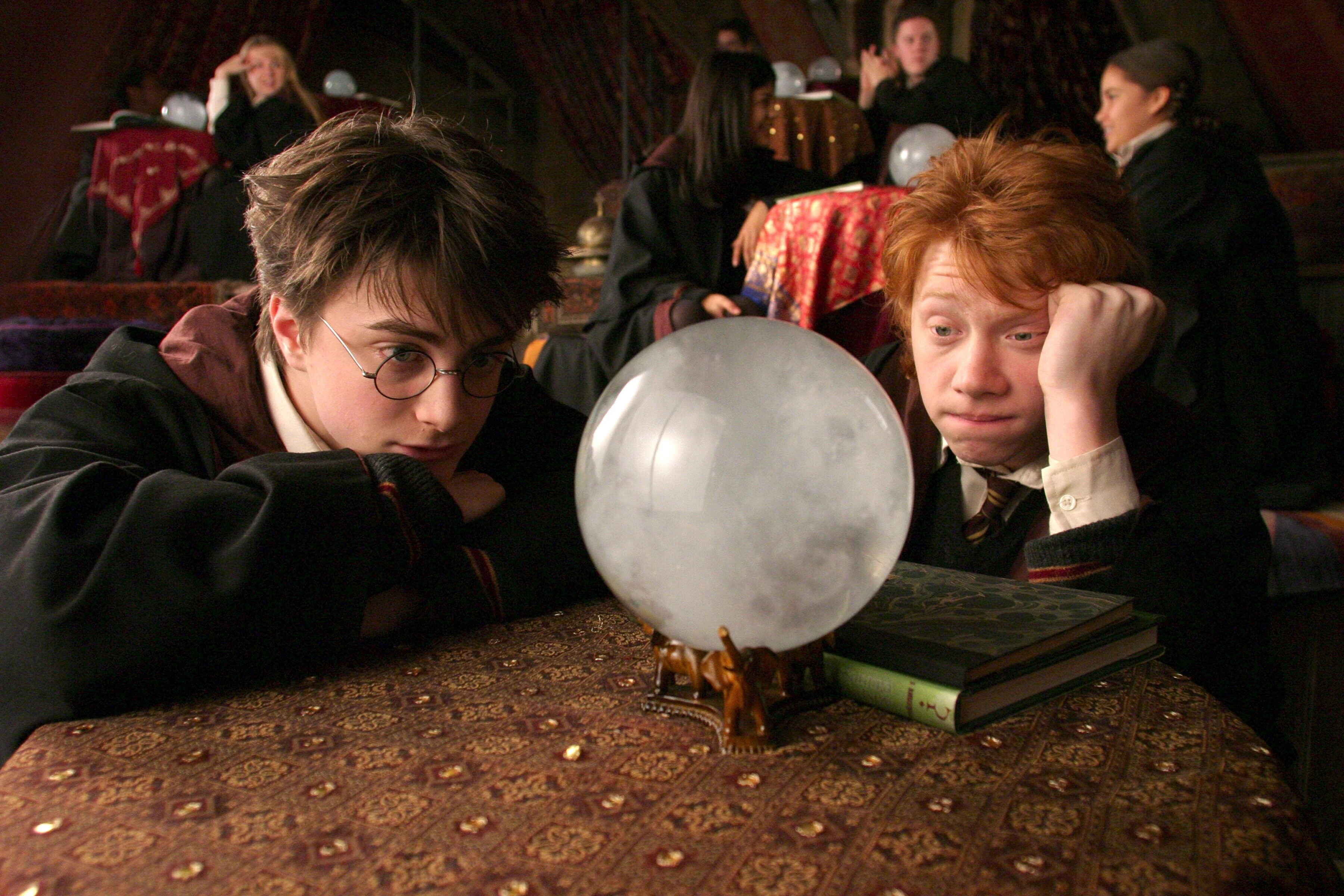
Scene from the movie «Harry Potter and the prisoner of Azkaban»/From open sources
Patterns and images begin to appear in the coffee grounds at the bottom of a cup after some practice. Additionally, professional fortune tellers always talk with the person who drank the coffee about why they are anxious about their future and what they expect. After this, it becomes even easier to notice patterns and images in the coffee.
What Patterns Should You Read?
In some regions, fortune tellers read both the cup and the saucer, while in others, they only read the cup. After the grounds have cooled, the fortune teller would try to lift the cup off the saucer. If it turns out that the cup is stuck to the saucer, the answer to the question cannot be obtained directly because the cup ‘does not want to be read’. In this case, it is called a prophet's cup. It is believed that this is a very favorable prediction for the intentions of the person who drank the coffee.
Interpreting coffee patterns is generally a positive experience, and it is popular because it brings good news and reassurance. For example, if most of the coffee grounds have flowed out of the cup onto the saucer, it means that worries are leaving the person who drank the coffee. A neat mound of grounds on the saucer warns that money will come soon. If the cup leaves a clean circle on the saucer, their wish will come true. If the circle is broken, things are not so straightforward and further consultation is required.
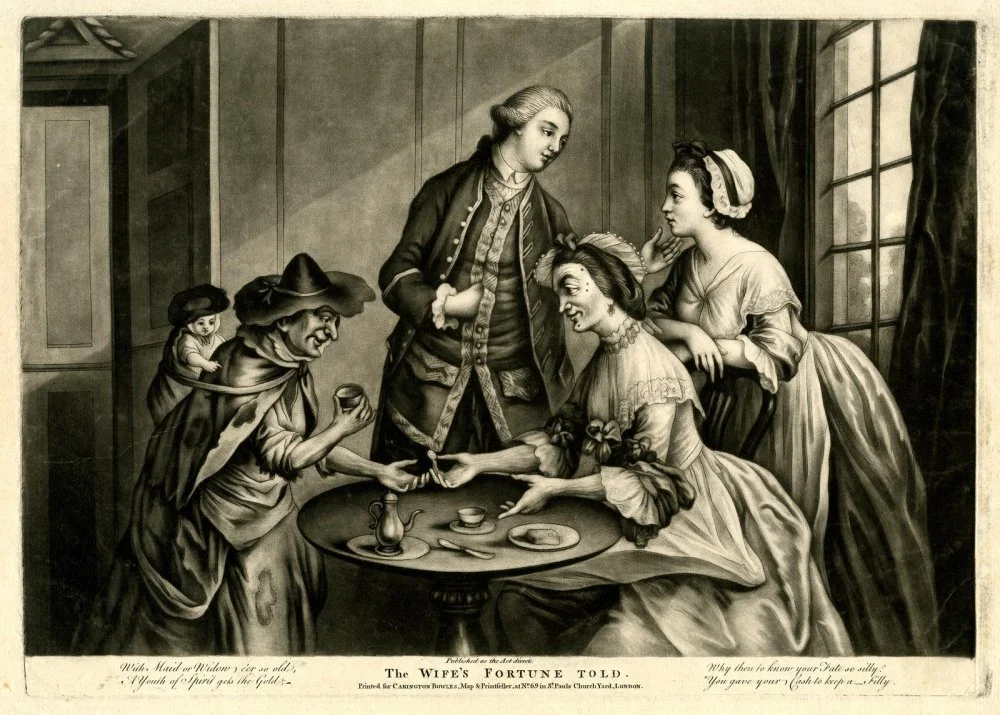
The Wife's Fortune Told. Between 1766 and 1784/Wikimedia Commons
If the fortune teller studies only the patterns in the cup, setting the saucer aside, the meanings are as follows: the bottom of the cup represents the past, the middle represents the present, and closer to the rim represents the future.
In other cases, the patterns on the saucer tell about the past, and the fortune teller looks into the cup to learn about the present and the future. In this scenario, the patterns at the bottom of the cup reflect what is in the person's heart, while those on the sides of the cup pertain to life events.
There are more complex methods where the fortune teller holds the cup with the handle pointing towards the querent and mentally divides it vertically and horizontally into five sections, each with its own significance. The area around the handle pertains to love and relationships; the section opposite the handle is related to money; the left side of the handle represents the current state of affairs for the querent; and the right section predicts the future. The bottom of the cup is interpreted in relation to events connected to home and family.
When reading coffee grounds, begin examining the patterns starting from the part close to the rim. And always inquire about the future first.

Nicholas Joseph Crowley. An old fortune-teller is reading a young woman's fortune. 1842/Wikimedia Commons
Typical Patterns
Lines
Vertical lines represent life goals. The clearer the line, the better the result, and if the line reaches the rim, this result is near. A straight line or a clear path inside the cup means there are no obstacles, and everything that the querent desires will come to fruition without facing major issues. Horizontal lines are interpreted in conjunction with other patterns at their level and signify different time periods.

Lines/Qalam
Dots
Small dots represent money. The more dots, the more money in your future.

Dots/Qalam
Circles
This means success in a planned endeavor.
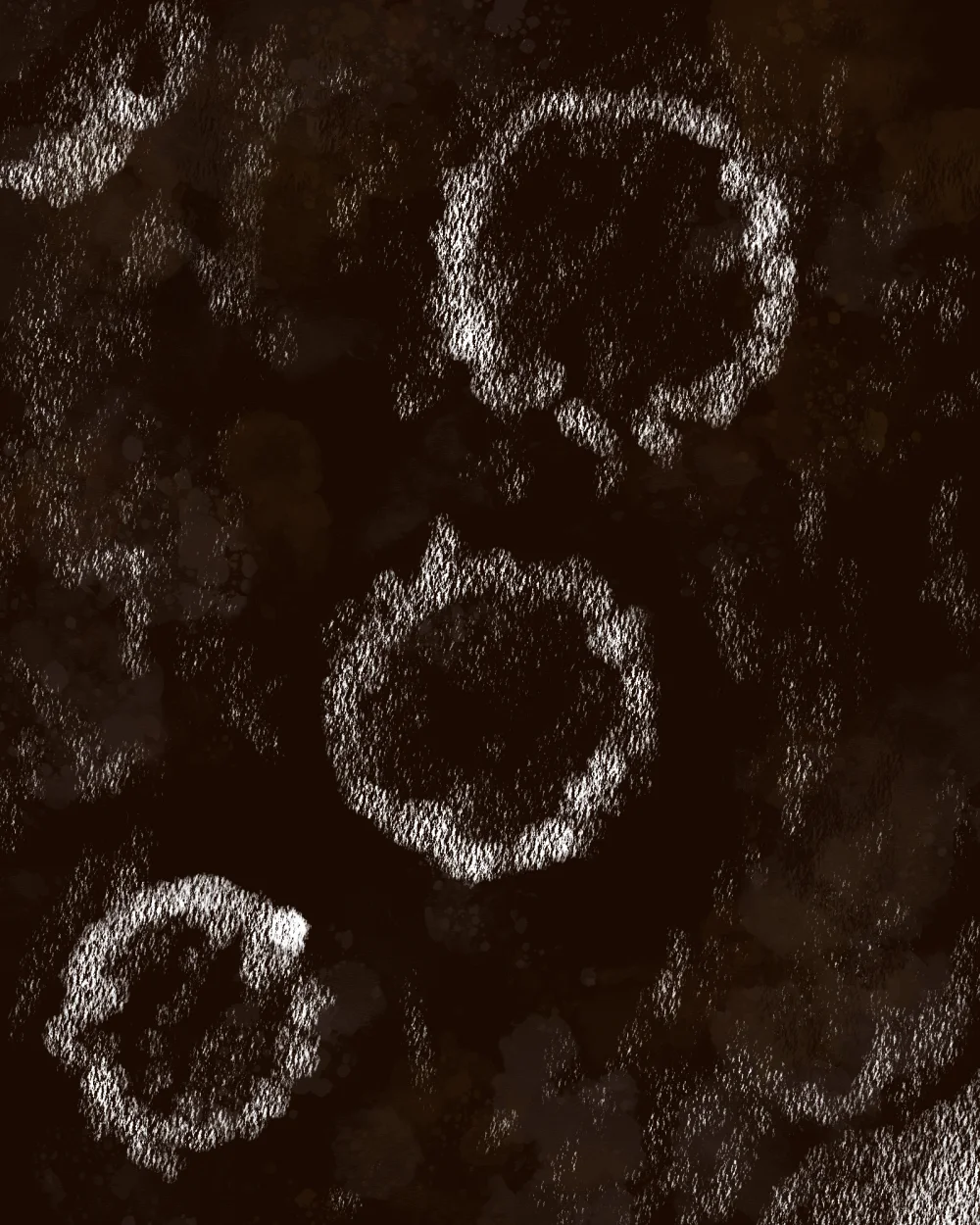
Circle/Qalam
Triangles
This means that changes should be expected.
Squares
The querent can expect a peaceful life.
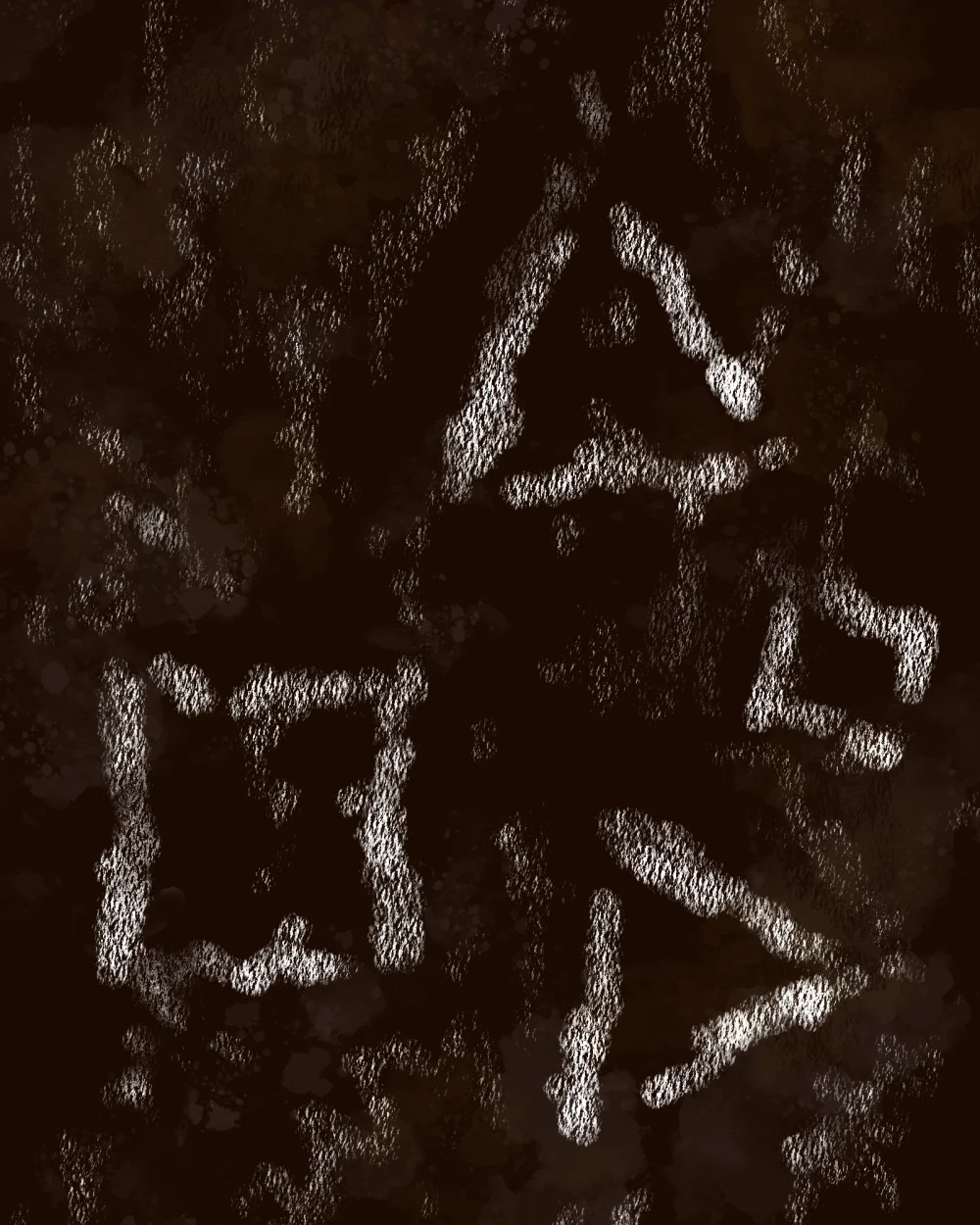
Triangles and squares/Qalam
Y
A choice will soon need to be made. This sign can also indicate that the querent will shortly receive help from a friend.
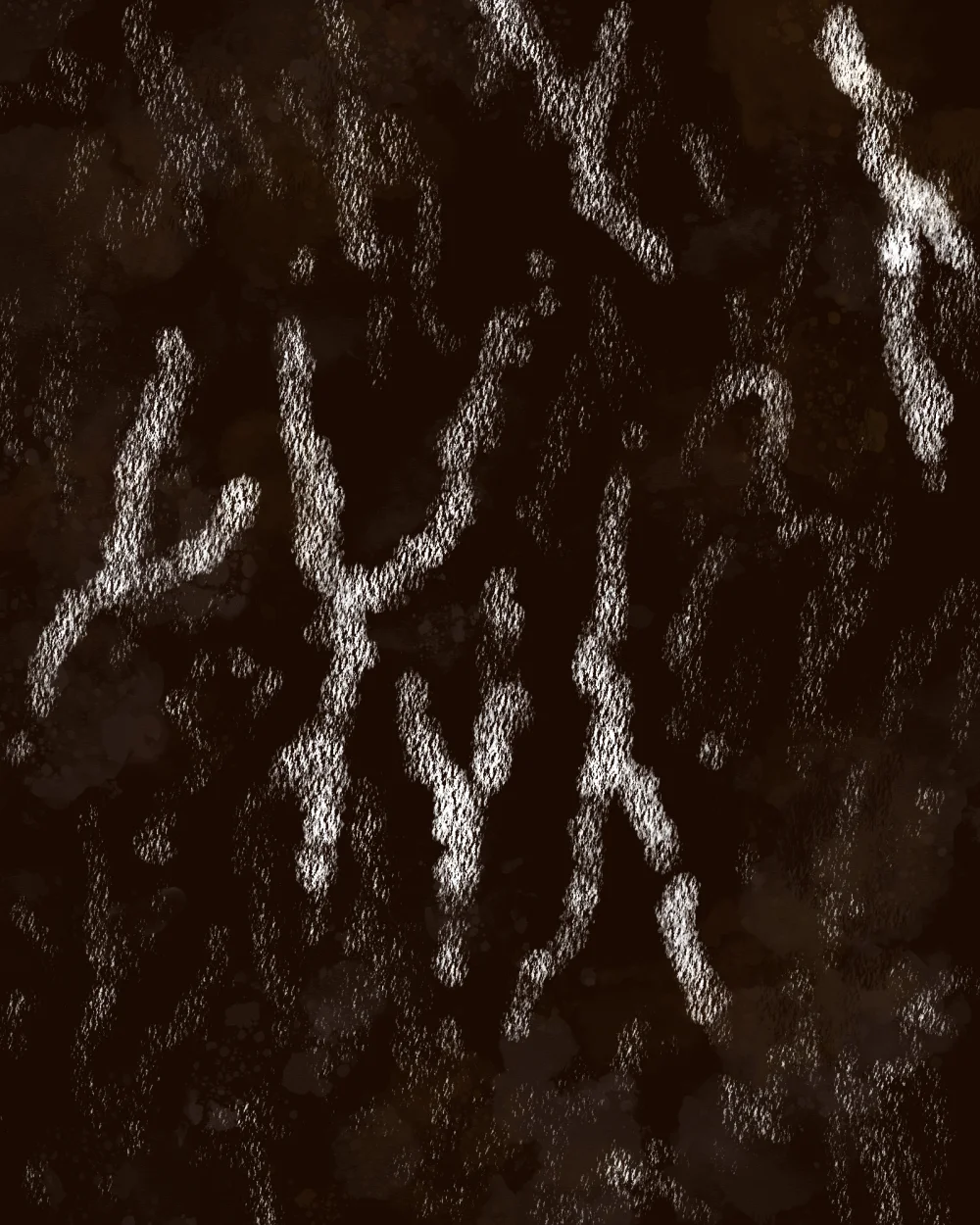
Y/Qalam
Exclamation mark (!)
The querent could be threatened with danger or intense experiences.

Exclamation point!/Qalam
Two dots
A composition of two dots, one above the other, predicts good luck.
A rising sun (a circle with radiating lines)
The querent’s dreams will come true, leading to new opportunities.
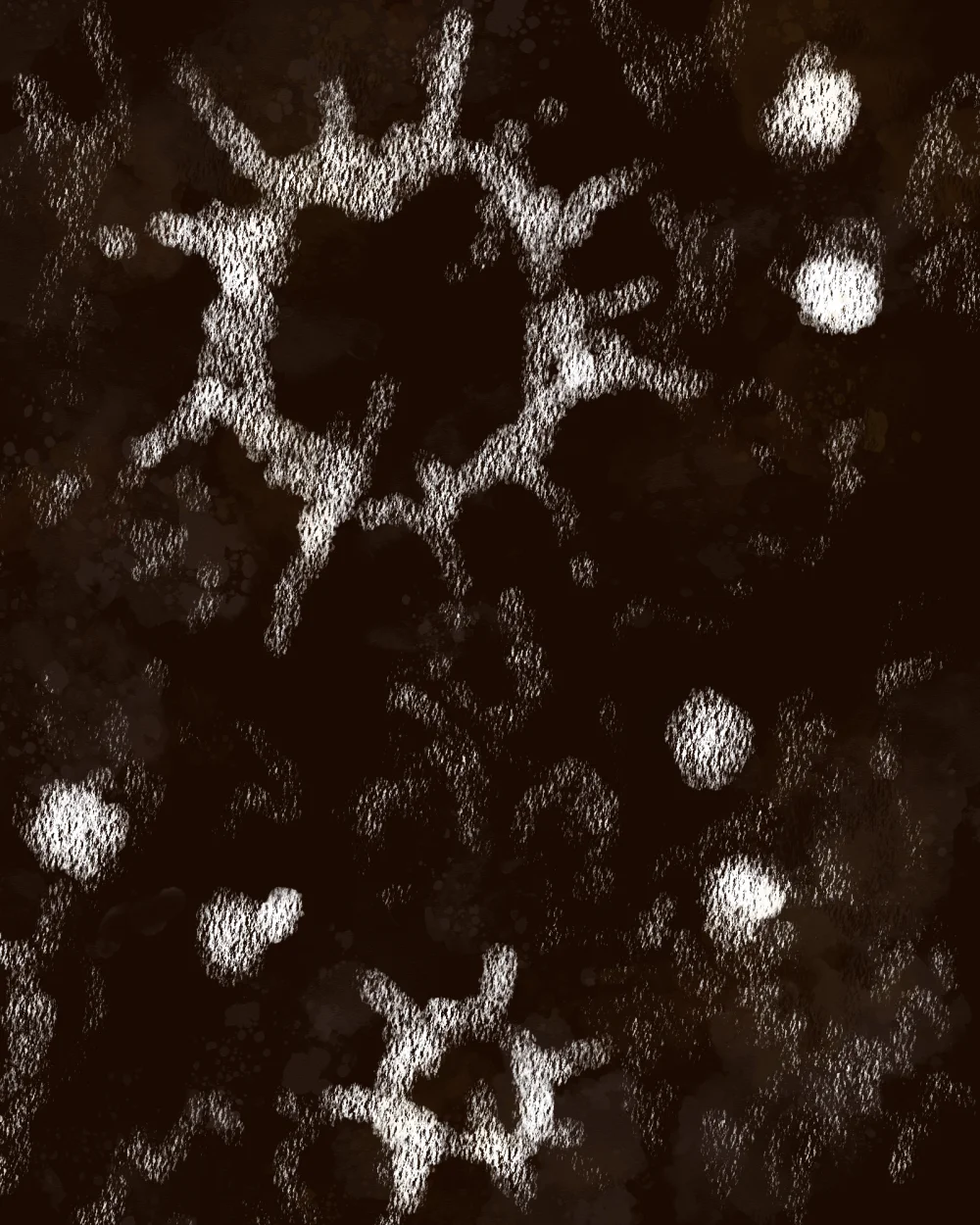
Two dots and Sunrise/Qalam
Rosary or beads
A pattern of large dots resembling beads signifies that achieving the desired goal will require effort and sacrifices.
Acorn
This means receiving an inheritance or a treasure, a symbol that finds a place in the Harry Potter universe as well:
Ron turned the teacup the other way up. ‘But this way it looks more like an acorn ... What's that?’ He scanned his copy of Unfogging the Future. ‘A windfall, unexpected gold.’
—'Harry Potter and the Prisoner of Azkabani
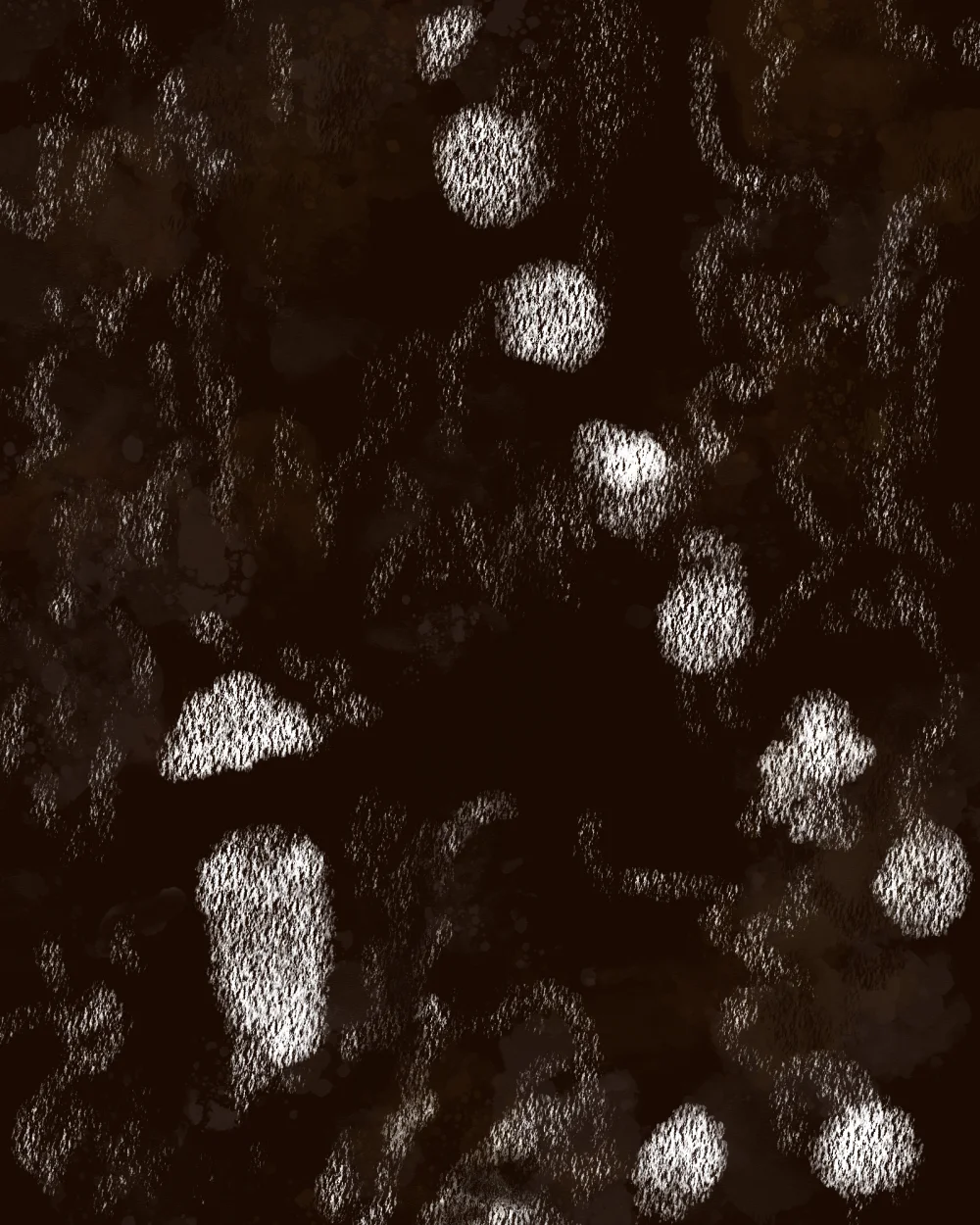
Rosary and Acorn/Qalam
Cross
The querent is either in mortal danger or has a hidden enemy.

Сross/Qalam
Where Does the Idea of Coffee Divination Come From?
Divination in the residue formed of thick liquids is called tasseography. This is an ancient practice that existed long before Turkish coffee. Ancient priests studied the patterns of blood and the state of the internal organs of sacrificial animals. Starting from the Middle Ages in Europe, people often used the patterns formed by hardened wax or lead for divination. For example, the Turks and Mongols examined the patterns on a sheep's shoulder blade charred in fire. In China, they studied the patterns formed by tea leaves in a finished cup of tea.
Although times have changed, the essence of divination has remained the same for millennia. Only the methods and mediums differ. We no longer sacrifice animals to study patterns in their blood and entrails, nor do we pour wax into a silver basin with water. But every time a Turkish fortune teller gazes at the patterns in coffee grounds, it is believed that he or she is communicating with the otherworldly realm.
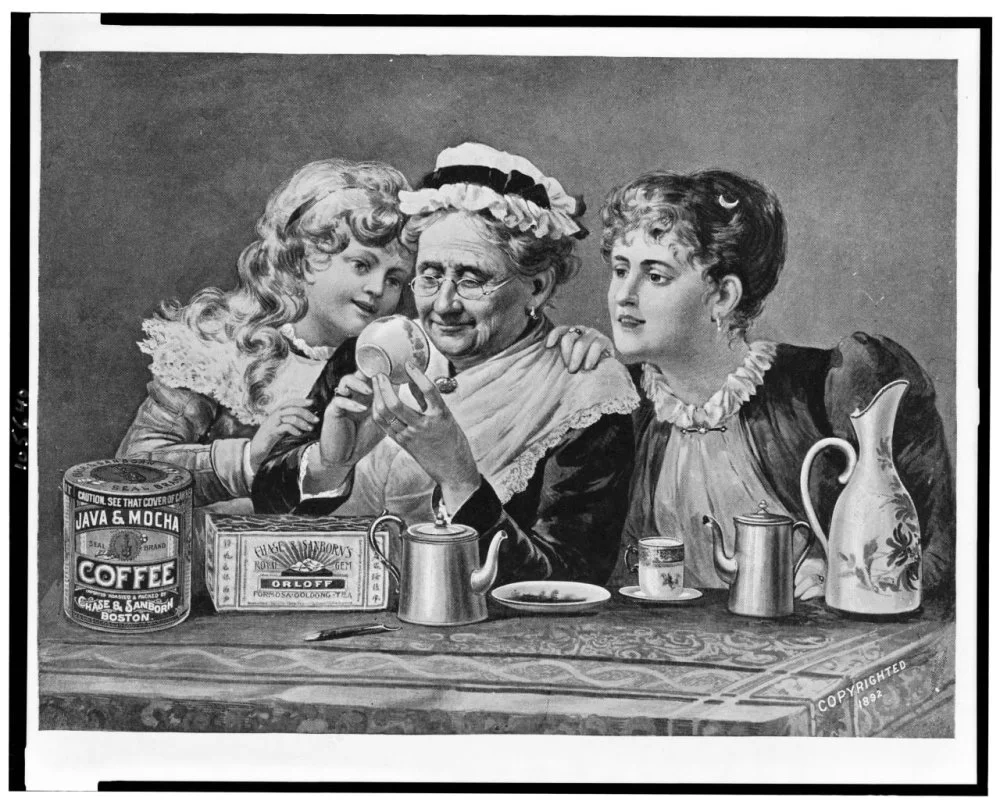
Advertisement for Chase & Sanborn's coffee and tea. 1892/Wikimedia Commons
What to Read
Chinese Book of Wisdom (Tong Sing), which is about tea leaf patterns and tasseography.
Coffee Grounds Divination by Gemma White